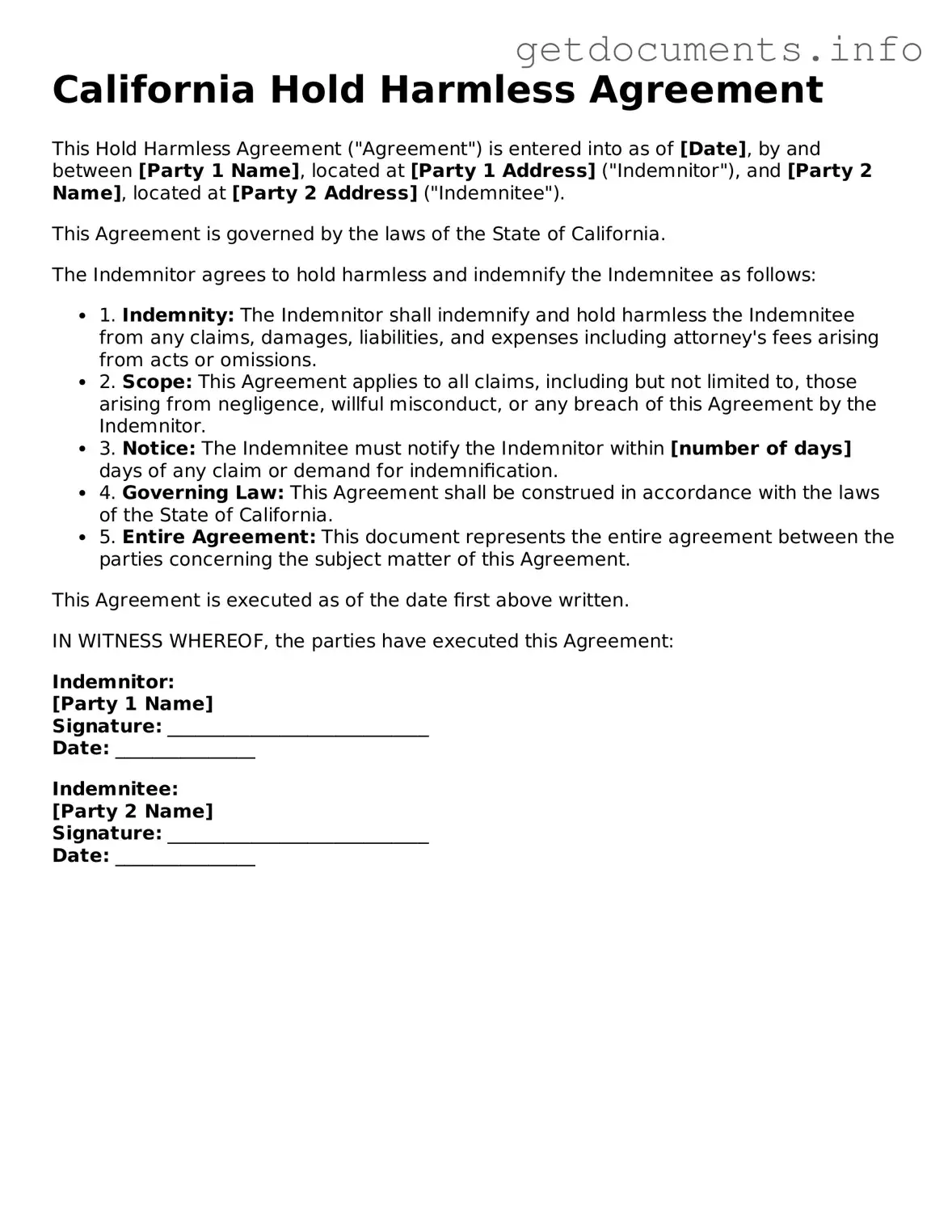Free Hold Harmless Agreement Template for California
The California Hold Harmless Agreement is a legal document that protects one party from liability for any damages or injuries that may occur during an activity or event. This form is commonly used in various situations, such as rental agreements or events, to ensure that one party does not hold the other responsible for unforeseen incidents. To safeguard your interests, consider filling out the form by clicking the button below.
Access Hold Harmless Agreement Editor
